
Don Quixote is a Spanish epic novel by Miguel de Cervantes. It was originally published in two parts, in 1605 and 1615. Considered a founding work of Western literature, it is often labelled as the first modern novel and the greatest work ever written. Don Quixote is also one of the most-translated books in the world and one of the best-selling novels of all time.

Don Giovanni is an opera in two acts with music by Wolfgang Amadeus Mozart to an Italian libretto by Lorenzo Da Ponte. Its subject is a centuries-old Spanish legend about a libertine as told by playwright Tirso de Molina in his 1630 play El burlador de Sevilla y convidado de piedra. It is a dramma giocoso blending comedy, melodrama and supernatural elements. It was premiered by the Prague Italian opera at the National Theater, now called the Estates Theatre, on 29 October 1787. Don Giovanni is regarded as one of the greatest operas of all time and has proved a fruitful subject for commentary in its own right; critic Fiona Maddocks has described it as one of Mozart's "trio of masterpieces with librettos by Da Ponte".

Fidelio, originally titled Leonore, oder Der Triumph der ehelichen Liebe, Op. 72, is the only opera by German composer Ludwig van Beethoven. The libretto was originally prepared by Joseph Sonnleithner from the French of Jean-Nicolas Bouilly. The opera premiered at Vienna's Theater an der Wien on 20 November 1805. The following year, Beethoven's friend Stephan von Breuning rewrote the libretto, shortening the work from three acts to two. After further work on the libretto by Georg Friedrich Treitschke, a final version was performed at the Kärntnertortheater on 23 May 1814. As these libretto revisions were going on, Beethoven was also revising some of the music. By convention, only the final version is called Fidelio, and the others are referred to as Leonore.
The History of Cardenio, often referred to as simply Cardenio, is a lost play, known to have been performed by the King's Men, a London theatre company, in 1613. The play is attributed to William Shakespeare and John Fletcher in a Stationers' Register entry of 1653. The content of the play is not known, but it was likely to have been based on an episode in Miguel de Cervantes's Don Quixote involving the character Cardenio, a young man who has been driven mad and lives in the Sierra Morena. Thomas Shelton's translation of the First Part of Don Quixote was published in 1612 and would thus have been available to the presumed authors of the play.
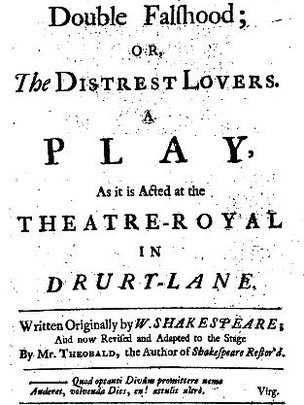
Double Falsehood or The Distrest Lovers is a 1727 play by the English writer and playwright Lewis Theobald, although the authorship has been contested ever since the play was first published, with some scholars considering that it may have been written by John Fletcher and William Shakespeare. Some authors believe that it may be an adaptation of a lost play by Shakespeare and Fletcher known as Cardenio. Theobald himself claimed his version was based on three manuscripts of an unnamed lost play by Shakespeare.
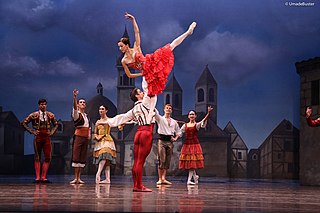
Don Quixote is a ballet in three acts, based on episodes taken from the famous novel Don Quixote de la Mancha by Miguel de Cervantes. It was originally choreographed by Marius Petipa to the music of Ludwig Minkus and first presented by Moscow's Bolshoi Ballet on 26 December [O.S. 14 December] 1869. Petipa and Minkus revised the ballet into a more elaborate and expansive version in five acts and eleven scenes for the Mariinsky Ballet, first presented on 21 November [O.S. 9 November] 1871 at the Imperial Bolshoi Kamenny Theatre of St. Petersburg.
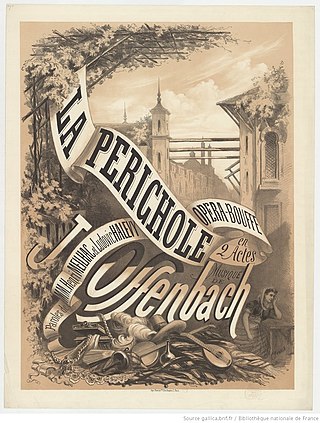
La Périchole is an opéra bouffe in three acts with music by Jacques Offenbach and words by Henri Meilhac and Ludovic Halévy. The opera depicts the mutual love of two impoverished Peruvian street singers – too poor to afford a marriage licence – and a lecherous viceroy, Don Andrès de Ribeira, who wishes to make La Périchole his mistress. Love eventually triumphs. The story is based loosely on the play Le carrosse du Saint-Sacrement by Prosper Mérimée (1828), and the title character is based on the Peruvian entertainer Micaela Villegas.

Don Quixote or Don Quixote de la Mancha is the first sound film version in Spanish of the great classic novel by Miguel de Cervantes Saavedra. It was directed and adapted by Rafael Gil and released in 1947. A huge undertaking for Spanish cinema in its day, it was the longest film version of the novel up to that time, and very likely the most faithful, reverently following the book in its dialogue and order of episodes, unlike G.W. Pabst's 1933 version and the later Russian film version, which scrambled up the order of the adventures as many film versions do. Characters such as Cardenio, Dorotea, and Don Fernando, which are usually omitted because their respective subplots have little to do with the main body of the novel, were kept in this film.

Doña Francisquita is a zarzuela in three acts composed by Amadeo Vives to a Spanish libretto by Federico Romero and Guillermo Fernández-Shaw and based on Lope de Vega's play La discreta enamorada. With its colourful score and comic story of multiple love triangles which ends happily for the young lovers, Francisquita and Fernando, Doña Francisquita is considered a classic of the zarzuela genre, and Vives' masterpiece.
Francesco Bartolomeo Conti was an Italian composer and player of the mandolin and theorbo. He also wrote the oldest mandolin method book that has survived.
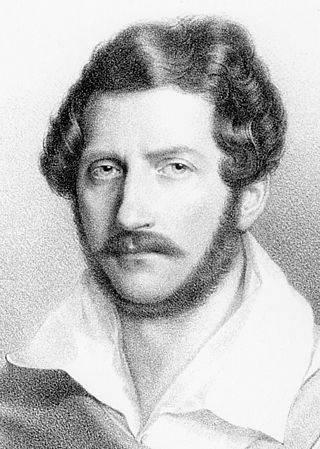
Il furioso all'isola di San Domingo(The Madman on the Island of San Domingo) is a "romantic melodramma" in two acts by the composer Gaetano Donizetti. Jacopo Ferretti, who since 1821 had written five libretti for Donizetti and two for Rossini, had proposed the unusual subject and he was contracted to write the Italian libretto based on a five-act play of the same title by an unknown author in 1820, which "had been given in the same theatre [...] and which Donizetti had immediately loved". However, as has been noted by Charles Osborne, the "ultimate derivation of both play and libretto is an episode in part 1 of Don Quixote by Miguel de Cervantes's published in 1605" which is the story of Cardenio and Lucinda.

Tutti in maschera is an opera by Carlo Pedrotti. The libretto is by Marco Marcelliano Marcello, based on the 1759 comedy L'impresario delle Smirne by Carlo Goldoni. It was premiered at the Teatro Nuovo, Verona, on 4 November 1856.
Pietro Pariati was an Italian poet and librettist. He was initially secretary to Rinaldo d'Este (1655–1737), Duke of Modena. Then from 1699 to 1714, he made his living as a poet in Venice, initially writing librettos with Apostolo Zeno, then independently. Then finally from 1714-1729 he was Metastasio's predecessor at the Vienna court of Charles VI, Holy Roman Emperor.

Lawrence Zazzo is an American countertenor who has performed at major opera houses in Europe and the US. His repertoire includes Baroque opera and oratorios as well as works of the 20th century.
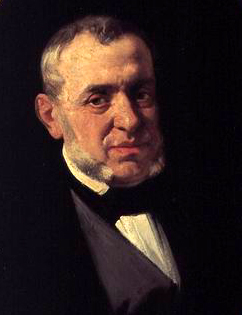
Caritea, regina di Spagna, ossia La morte di Don Alfonso re di Portogallo, is an opera in two acts by Saverio Mercadante, with a libretto by Paolo Pola. It was premiered at Teatro La Fenice in Venice on 21 February 1826.

Chiara e Serafina, o I pirati is an opera semiseria in two acts by Gaetano Donizetti to a libretto by Felice Romani, based on the melodrama La cisterne by René Charles Guilbert de Pixérécourt. Donizetti's first opera for La Scala, it was premiered on October 26, 1822, but was not a success. Donizetti was not given the opportunity to compose again for La Scala until writing Ugo, conte di Parigi nearly a decade later.
Maria Landini was an Italian soprano who began her career as a singer at the court of Queen Christina in Rome but was primarily active at the imperial court in Vienna from 1711 until her death. She created numerous soprano roles in operas and oratorios by Fux, Caldara, and her second husband, Francesco Bartolomeo Conti and was reputedly the highest paid musician in Vienna at the time.

Don Chisciotte alle nozze di Gamace, composed by Antonio Salieri, is an Italian-language opera. The libretto presents the opera as in one act, and the musical score includes a mid-point division, both score, and libretto originally denoted the work a divertimento treatrale. The libretto was written by Giovanni Gastone Boccherini, dancer, poet and stage manager, brother of the composer Luigi Boccherini. The work is loosely adapted from chapters 19 and 21 of Part II of the novel Don Quixote by Miguel de Cervantes. The work was a hybrid opera buffa and ballet, with choreography by Jean-Georges Noverre.
















